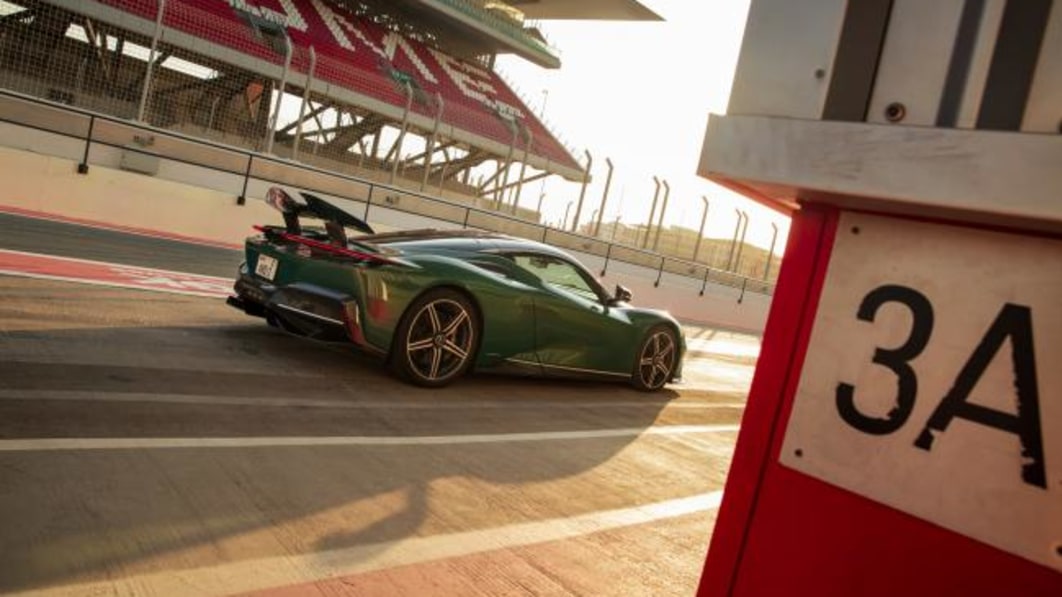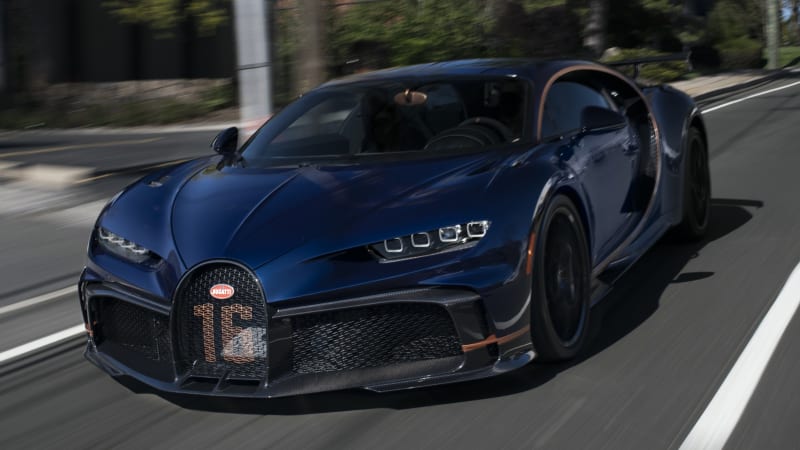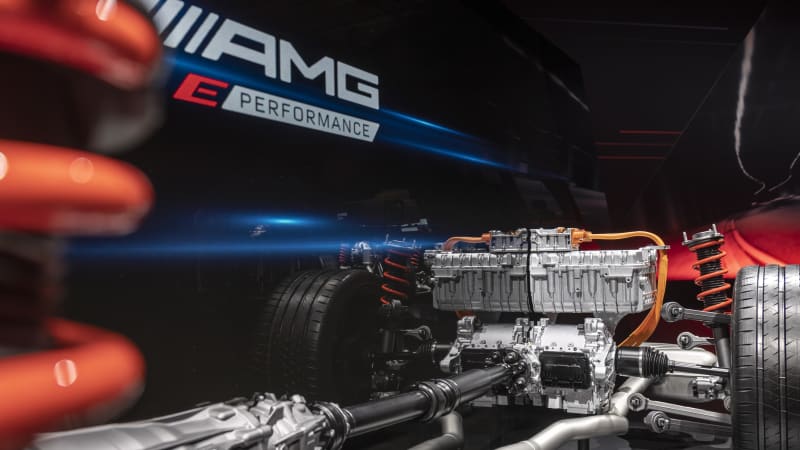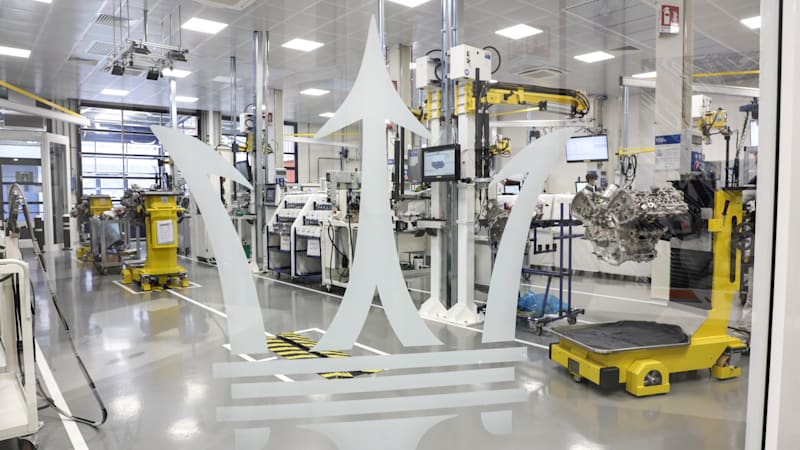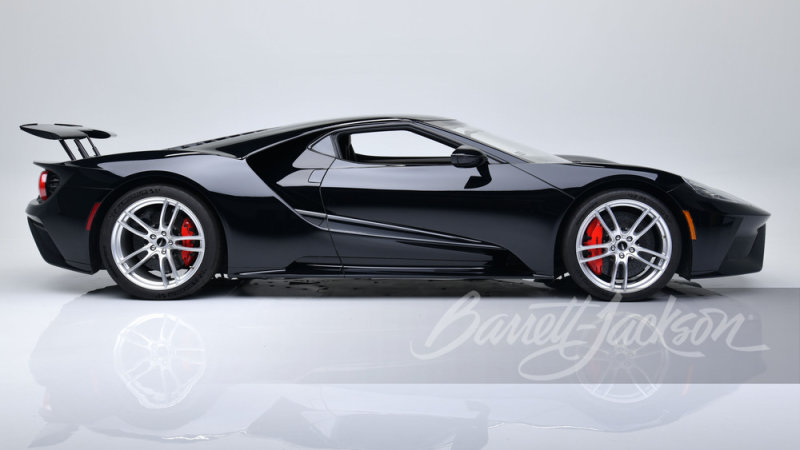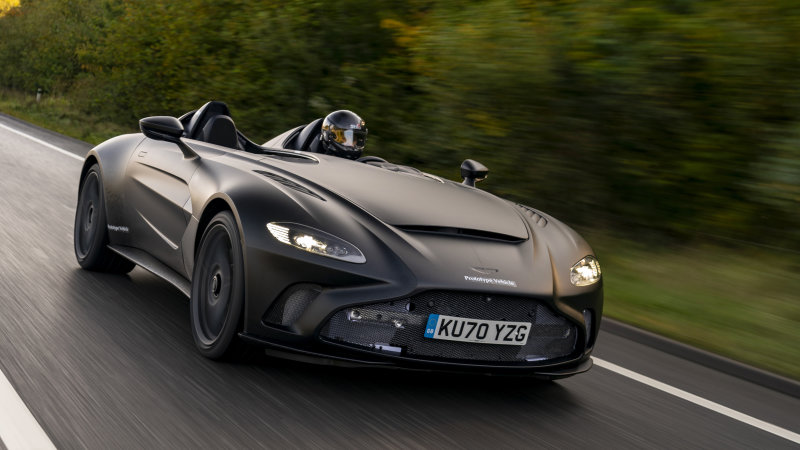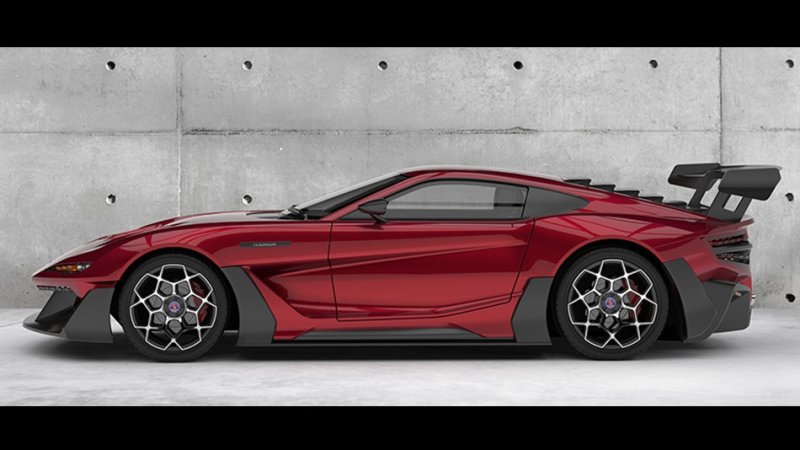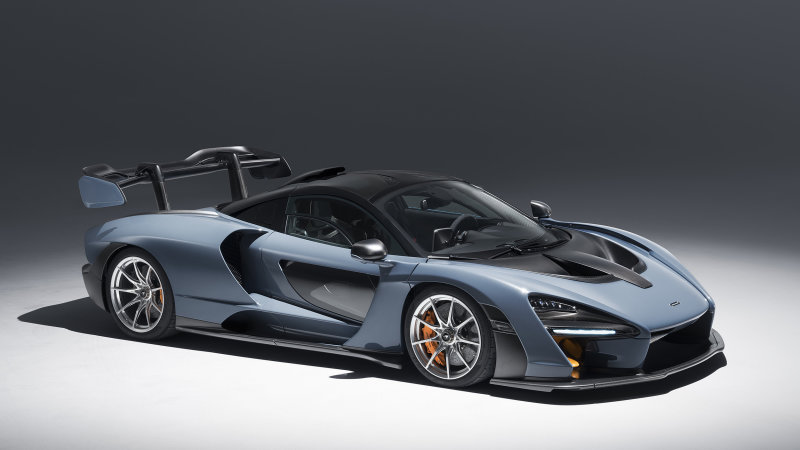Apparently, even some Bugatti owners consider the real-world ramifications of a $3.6-million, 1,500-horsepower car. The Chiron Pur Sport is proof. Somewhere, perhaps between the helipad and the superyacht, Bugatti prospects are realizing they’ll never have the opportunity or skill to reach 300 mph, or 261 mph — the respective top speeds of the Chiron Super Sport 300+ and standard Chiron.
The Pur Sport squeezes a mere 217 mph from its own 8.0-liter, 16-cylinder, quad-turbo engine. But Bugatti says the Pur Sport is the quickest Chiron at any speed between zero and 217 mph. It’s also the lightest, sharpest-cornering, least-insulated version — optimized for a driver’s sensory stimulation, versus the largely psychological bragging rights of top speed. Consider it the high-performance version of one of history’s highest-performing cars.
After driving the Pur Sport in Connecticut, with three-time 24 Hours of Daytona-winner Butch Leitzinger riding shotgun, I’ll say it’s definitely the one you want. “You” here would refer to Powerball winners, a payback-minded Melinda Gates, or silver-spooners who scoop up one of 60 Pur Sports, among 500 Chirons scheduled for production through about 2023.
Leitzinger explains how it all works, as we walk around a Pur Sport in striking Atlantic Blue paint. Tasteful copper trim adorns the Bugatti’s signature C-shaped line that shelters doors ahead of the side inlets for turbo air and their intercooler radiators. Front wheel-arch vents extract more air. Less-tasteful is the optional number “16” emblazoned on the Pur Sport’s widened horseshoe grille, as if anyone could forget the unsurpassed cylinder count. Ditto for giant “Bugatti” lettering on the Pur Sport’s angled, 74-inch-wide rear wing. Add a Bugatti pillow, and it could double as a sunbathing deck. (As with everything Bugatti, the jersey
number and lettering are entirely a matter of choice.)
![]()
![]()
![]()
The fixed wing is tasked solely with downforce, replacing the electro-hydraulic wing/air-brake on other Chirons that adjusts to trim drag for record-setting acceleration runs. Its stanchion and a massive diffuser form a cool X-shape, atop an artfully thin-walled, 3D-printed titanium exhaust, its temperature-resistant outlets seemingly large enough to service a nuclear reactor.
The view-blocking wing saves 22 pounds, among 110 pounds of total weight savings versus a Chiron. That includes magnesium wheels that save a critical 36 pounds of unsprung weight, with optional carbon-fiber aero blades to aid brake cooling and reduce turbulence. There’s less interior sound dampening and slimmer seats. Four driven wheels are wrapped in staggered Michelin Pilot Sport 2R tires, including 355/25/21s at the rear. Since the tires don’t have to withstand gyroscopic torture and heat above 260 or even 300 mph, Bugatti specced a softer, more aggressive rubber compound that delivers sharper turn-in and 10% more grip. The same trade-off allows more negative wheel camber front and rear, boosting agility over pure velocity. Handling gets another upgrade with 65% stiffer springs up front, 33% firmer at the rear, with re-tuned dampers, stiffer top mounts and new carbon-fiber anti-roll bars.
I hop into the driver’s seat, press the start button, and hear the improbable, 8.0-liter W16 chuff to life. There’s Alcantara everywhere, replacing the Holy Cow leather of other Chirons. That includes a flat-bottomed steering wheel and door panels with a laser-scored pattern. The nubby material underlines the Pur Sport’s raw functionality, but to me, doesn’t exactly scream seven-figure car. I’m not sure what would help. A Chinchilla headliner? A Patek Philippe tourbillon in the dash? Either way, this wannabe Bugatti buyer wants his leather back. Black-anodized aluminum and titanium switchgear replace the usual aluminum finish. There’s no cupholder, center navigation screen, or the Audi-based Virtual Cockpit you might expect in this VW Group halo car; but the enormous, 300-mph center speedometer is certainly an invitation to play.
![]()
![]()
We ease out of Bugatti of Greenwich, the showroom that took possession of America’s first Pur Sport back in January. Leitzinger points the way to the winding Merritt Parkway, one of my favorite impromptu test spots in the area, where I’ve lately rocked the new 228-horsepower Volkswagen GTI, a 473-hp BMW M4 and a 650-horsepower Porsche 911 Turbo S. The Bugatti has more horsepower than those three cars combined, and nearly as much torque, at 1,180 pound-feet, peaking at just 2,000 rpm.
From stoplight to roughly 60 or 80 mph, the Pur Sport accelerates like that Porsche Turbo or a Tesla Model S P100D: insanely fast, yet familiar. Then things change, quickly. All previous points of comparison are blurred and elided. An opening in traffic lets me snap off a few paddle shifts through the seven-speed, dual-clutch gearbox. The next thing I know, we’re brushing 140 mph. Even that 911 Turbo S, or a Lamborghini Huracan Performante, feels like it’s starting to work for speed by that point. Not the Bugatti, which feels determined to show off its “reduced” 217-mph apogee. “It’s a rocket that doesn’t slow down,” Leitzinger says.
The Pur Sport’s seven forward gear ratios are all shortened by 15 percent, keeping the engine in its Wonka-level sweet spot and helping the car burst from corner exits. About 80 percent of the transmission components are new. Engine redline rises by 200 rpm, to 6,900 rpm. And where the Chiron’s whistling turbos and pleasurable gasps from its wastegates still dominate the soundtrack, reduced cabin insulation here admits more of the engine’s 64-valve mechanical symphony.
Bugatti cites a 0-60 mph sprint in less than 2.3 seconds, 0 to 124 (200 kph) in 5.9 seconds, and 0 to 186 (300 kph) in 12.4 seconds. That 0-to-124-mph run shaves a significant 0.6 second from the Chiron’s time, with 186 arriving 1.1 seconds quicker. A quarter-mile takes 9.4 seconds at a silly 158 mph. The Bugatti made every car I drove before and after seem slow. Leitzinger concurs, recalling the time he drove his father’s Mercedes just after the Bugatti and was convinced something on it was broken.
![]()
![]()
Brakes are as strong as you’d pray for in a car this powerful, thanks to the Pur Sport’s enlarged rotors and titanium base pad. Reeling in cars ahead and squeezing the brakes at 125 mph, I’m back down to 55 before the Prius cohort even knows what hit them.
But it’s the Bugatti’s newfound agility that may be most remarkable. I didn’t get to detour the Pur Sport to the tight-radius mountain roads north of New York City, but the Merritt’s triple-digit sweepers were still telling. The Bugatti’s re-tuned steering feels as natural and engaging as any electric rack in the industry, including from Ferrari or Porsche. Weight and feedback build in beautiful tandem with rising g forces. The poise and handling is all the more remarkable considering the Pur Sport’s AWD and a still-chunky curb weight above 4,300 pounds. To take full advantage, a new ESC Sport Plus mode loosens the electronic leash for skilled drivers, with delayed intervention from the traction control.
Punching up financial numbers on this Bugatti seems pointless — dollars being as fungible as Dogecoins to its buyers and collectors — but I can’t resist a few. For just $220,000, about the base price of a Ferrari Roma, Bugatti offers a “split” body option that renders the Pur Sport’s lower third in exposed carbon fiber. That’s right, $220,000 to not paint the entire body. (Bugatti would surely prefer some half-full description of the paint treatment). And a new Skyview option, with two fixed glass panels astride the Chiron’s roof fin, is an easy skip for $60,000, especially because there’s no roller shade or electrochromic tint to tame the sun. With that Skyview (but no split paint) and a surprisingly short options list, including a $60,000 Interior Package (don’t ask), this Pur Sport checked out at $3,788,900. And here I thought a Porsche Boxster GTS 4.0 was a dream car, at precisely $100,000 with options and a stick.
![]()
Ultimately, the craziest part isn’t how much a Chiron costs, or fast it goes — that’s all crazy enough — but how easygoing it feels. Where some hypercars feel like stressed-out animals on the street, the Chiron trundles as happily as a Lexus GT in the construction traffic we encounter and when rolling through country-estate Connecticut. At that mellow pace, only the ongoing freak-out from fellow drivers reminds us how singular and sublime the Bugatti must appear.
“There are many sports-car owners who have a 600-horsepower car that’s already trying to kill them,” Leitzinger says. Instead, 60 of them will enjoy a 1,500-hp Bugatti, the most Jekyll-and-Hyde automobile in human history, and live to tell the tale.
Related video:

